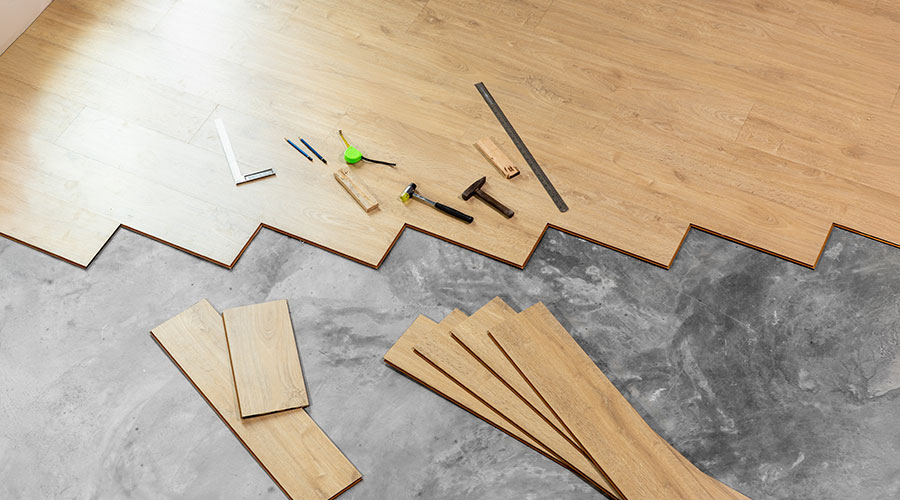Flooring Decisions Involve Issues of Sustainable Content, Chemical Exposure
Part 2 of a 4-part article describing 4 steps to a sustainable floor
Additional areas that facility managers can focus on in making a careful decision about flooring products include sustainable content and chemical exposure.
STEP 2: SUSTAINABLE CONTENT
Thinking about how materials can be disposed or reused at end of life naturally leads to considering material content in the first place. A common designation facility managers will come across is a listing of the recycled content in a product.
Flooring systems made from recycled or reclaimed material, whether old wood beams, discarded carpets, or empty soda bottles, reduce the impact on the environment that results from extracting, processing, and transporting virgin materials.
An added bonus: Some systems “are steeped in cultural history, and that can resonate with clients,” says Anthony Brower, LEED AP BD+C, sustainable design director with Gensler. For instance, wood beams reclaimed from a local landmark and incorporated within the floor of a new office building can lend it cachet, and even be a selling point with prospective tenants.
Besides recycled content, high degrees of biobased products can be desirable. Biobased products are derived from plants and other renewable agricultural, marine, and forestry materials, according to the U.S. Department of Agriculture. They can minimize the use of materials that contain substances, such as carcinogens, shown to have harmful effects on health, Davis says. In addition, they can reduce the need for products made from petroleum, which often need to be transported from great distances.
One example is an old standby: linoleum. Its main ingredient is linseed oil, which comes from the flax plant. “It’s the most commonly used sustainable hard surface,” says Ruth Jansson, director of interiors with Leo A Daly.
Closely related to biobased content considerations is the product’s “rapidly renewable” content. LEED considers materials rapidly renewable if they’re derived from plants with a harvesting cycle of no longer than 10 years. Among the flooring products that tend to fall within this definition are cork, bamboo, and linoleum. Cork, for instance, comes from the bark of the cork oak tree. After the bark is harvested, it grows back, maintaining the health of the tree.
However, any calculation of the environmental impact of these materials needs to account for transportation, Brower points out. For instance, many of the largest concentrations of cork trees are in countries around the Mediterranean. Shipping rapidly renewable products long distances can make “the environmental calculation good for the product, bad on transportation,” he says.
STEP 3: CHEMICAL EXPOSURE
The content of flooring material also potentially has a direct, and long-term, impact on indoor environmental quality and human health exposures. When it comes to evaluating the sustainability of flooring and other building materials, “we think human health should be top of mind,” says Maria Rutland, senior marketing manager for the environment with UL Environment Inc. “It’s how the people in the space where the product is used will be impacted.”
Using low-emitting products is one of the easiest ways to contribute to a healthier indoor environment, Rutland adds. This not only benefits tenants, but can reduce the number of complaints facility managers receive.
In addition to limiting exposure through the chemistry of a flooring product, care should also be taken to avoid creating VOC exposure through the cleaning methods used. “The idea of sustainable flooring and maintenance go hand in hand,” says Juli Schroeder, senior associate and senior interior designer with Gensler. This includes the methods used to clean a floor and how frequently cleaning is required.
Some manufacturers warn that the use of harsh cleaning products may not only bring unwanted chemicals into a building, but also negatively affect how their flooring materials perform, Davis says.
Related Topics:














